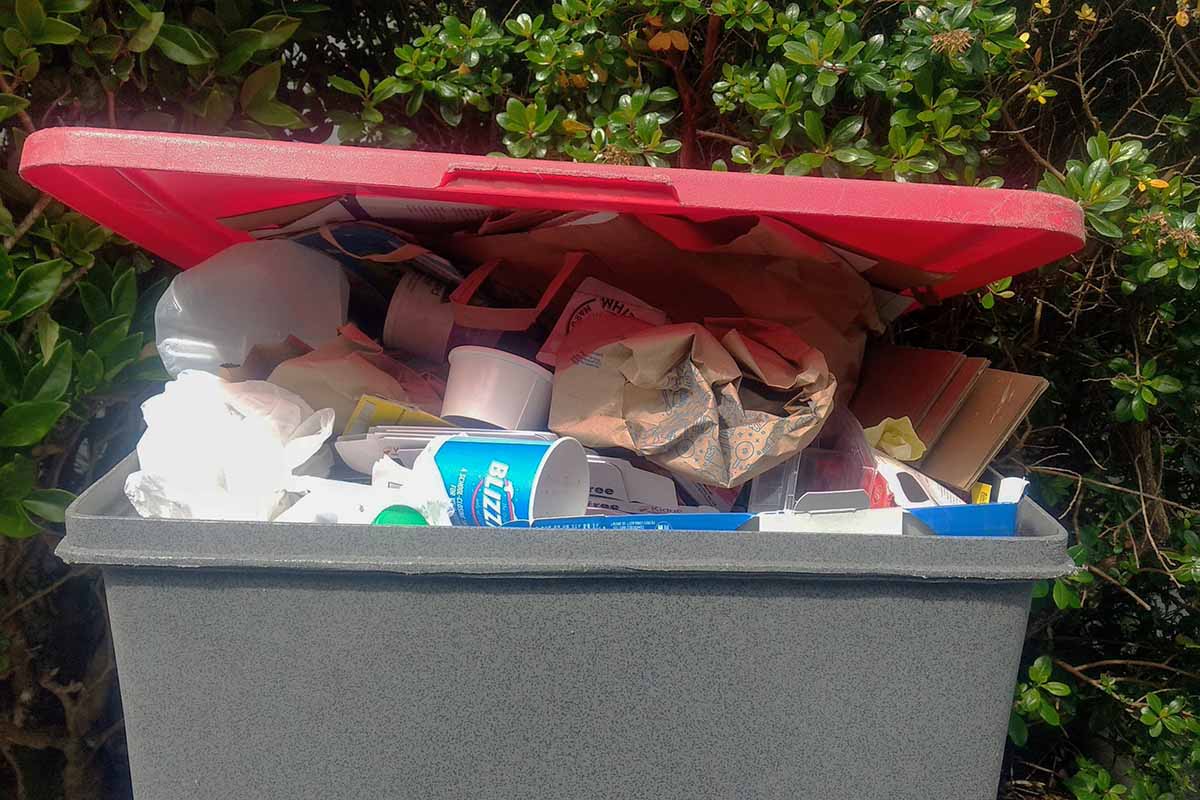
The report from SWANA delves into how poor recycling behaviors develop and why they persist. | Scott Beck / Resource Recycling Inc.
Education campaigns may improve curbside recycling practices for residents who produce average or low amounts of contamination, but they may not impact the worst offenders, according to new research.
The Solid Waste Association of North America (SWANA) last week released a report developed by its Applied Research Foundation. Titled “Reducing Contamination in Curbside Recycling Programs,” the report details a study of residents’ recycling behavior in 2018.
The study was initiated to probe how poor recycling behaviors develop and why they persist. Understanding these factors “should enable recycling and sustainability program managers to develop and implement more effective anti-contamination programs that address the underlying reasons for curbside recycling contamination,” SWANA wrote in an executive summary of the research.
Researchers looked at recycling practices in two communities in the Solid Waste Authority of Central Ohio (SWACO) service area, sampling curbside recyclables before and after a switch from bins to carts. The switch was accompanied by an outreach campaign.
The study identified three groups of households based on contamination in their recyclables. “High performers” were households with contamination rates of less than 10%; “learners” had rates of 10% to 24%; and “under performers” produced contamination rates of higher than 25%.
After recycling carts and the outreach campaign, “high performers” jumped from 39% to 50% of households and “learners” dropped from 38% to 22%, suggesting outreach reduced contamination rates for these groups.
But the highest-contamination group saw different results. Households deemed “under performers” increased from 23% to 28%.
“This increase in contamination occurred despite the extensive educational outreach that was conducted during the bin-to-cart conversion program,” SWANA wrote. “This suggests that increased education outreach is not likely to have a significant impact on the contamination caused by this group.”
These different trends – and the tailored outreach efforts that can address these differences – are detailed in the full SWANA report, which is only available to SWANA Applied Research Foundation subscribers.
“One factor that is often overlooked in responding to the curbside recycling contamination issue is the varying levels of recycling commitments of residents who are provided with curbside recycling collection services,” SWANA wrote. “Recycling and sustainability program managers often overestimate the commitment of certain residents, and mistakenly assume that contamination issues can be resolved through increased spending on recycling public education programs.”
More stories about contamination
"how" - Google News
March 30, 2021 at 11:01PM
https://ift.tt/31A0cMy
How do outreach efforts impact different households? - Resource Recycling
"how" - Google News
https://ift.tt/2MfXd3I
Bagikan Berita Ini















0 Response to "How do outreach efforts impact different households? - Resource Recycling"
Post a Comment